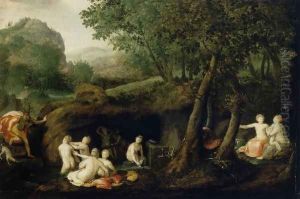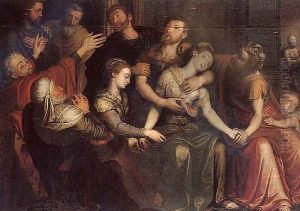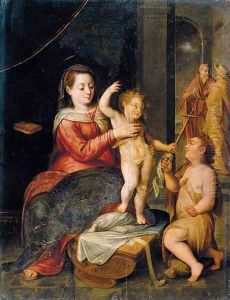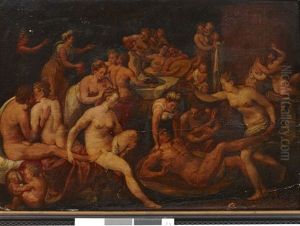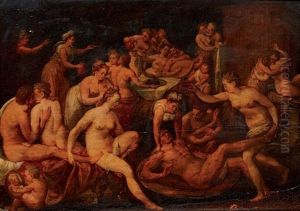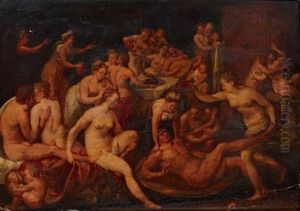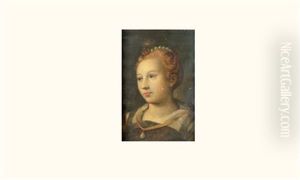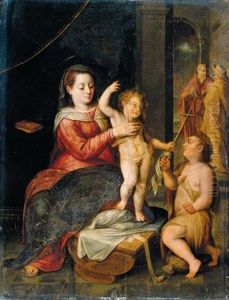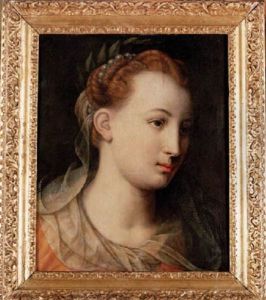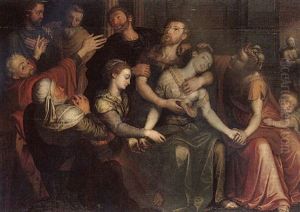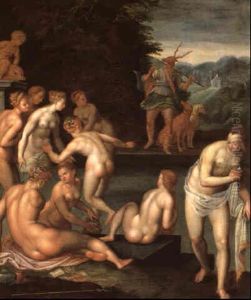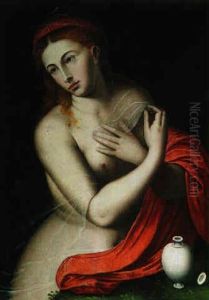Bernaert de Ryckere Paintings
Bernaert de Ryckere, also known as Bernaert de Rijckere, was a Flemish Renaissance painter born in 1535 in Kortrijk, which at the time was part of the Spanish Netherlands. Little is known about his early life, but he is believed to have been a member of a family of artists; his father, Pieter de Ryckere, was a painter, and his brother, Pieter de Ryckere II, was also involved in the arts.
De Ryckere's work is characterized by the influence of Italian Renaissance, which was typical for Northern European artists of the time who sought to emulate the styles and techniques of Italian masters. He is known to have traveled to Italy, which was common among artists of his period seeking to refine their skills and learn from the great Italian painters. His trip to Italy would have exposed him to the works of artists such as Michelangelo, Raphael, and Titian.
After returning from Italy, de Ryckere became a master in the Guild of St. Luke in Antwerp in 1559, which was the city's painter's guild and a testament to his professional status. In 1561, he returned to Kortrijk, where he became active in the city's artistic life. His paintings often depicted religious subjects, as was typical for the time, and he is known to have created altarpieces for local churches. His style blended Northern Renaissance attention to detail with the grandeur and dynamism found in Italian Renaissance compositions.
There is no comprehensive catalogue of de Ryckere's works, and many of his paintings have been lost or remain unidentified. However, some of his attributed works have survived, often featuring rich color palettes, detailed landscapes, and dramatic figures that reflect his combined Flemish and Italian influences.
De Ryckere's date of death is not precisely known but is believed to be around 1590. Despite his apparent skills and the influence of his work during his lifetime, Bernaert de Ryckere is not as widely remembered as some of his contemporaries. The scarcity of information has kept him from achieving the same level of posthumous fame as other artists from the same period. Nevertheless, his contributions to the Flemish Renaissance and his successful integration of Italian influences into Northern European art are recognized among art historians who specialize in this era.
